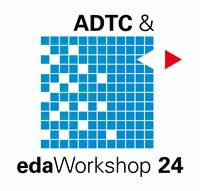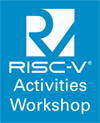Quo Vadis, EDA? Reasoning about the Trends andChallenges of Engineering Design Automation
edaForum05 Presentation
Alberto L. Sangiovanni-Vincentelli, Univ. of California at Berkeley
Quo Vadis, EDA? Reasoning about the Trends and Challenges of Engineering Design Automation
Abstract
EDA has played a pivotal role in the past 25 years in making it possible to develop a new generation of electronic systems and circuits. However, innovation in design methodologies has slowed down significantly as we approach a limit in the complexity of systems we can design satisfying increasing constraints on time-to-market and correctness. There is a general trend for the electronics industry to focus on system issues, as software becomes a fundamental component and as the supply chains are destabilized because of the quest for additional value-added in presence of increasing costs and investments. At the same time, manufacturing issues are populating the nightmares of circuit engineers as they try to cope with an implementation fabric that becomes unreliable and difficult to characterize.
These trends are at the same time creating severe problems to companies that are based on a business model that is showing stress and opportunities for new enterprises that come into the play with new vistas. There are many open issues to resolve to move towards the new world of technology as world-wide economic developments add complexity to the forecasts. In this presentation, we will look at the issues facing the electronic companies supply chains, the technical challenges, possible solutions and scenarios.
Biography
 Alberto L. Sangiovanni-Vincentelli Chair of Electrical Engineering and Computer Sciences University of California at Berkeley
Alberto L. Sangiovanni-Vincentelli Chair of Electrical Engineering and Computer Sciences University of California at Berkeley
He holds the Edgar L. and Harold H. Buttner Chair of Electrical Engineering and Computer Sciences at the University of California at Berkeley. He was a co-founder of Cadence and Synopsys, the two leading companies in the area of Electronic Design Automation. He is the Chief Technology Adviser of Cadence. He is a member of the Board of Directors of Cadence, UPEK, Sonics, Gradient and Accent, an ST Microelectronics-Cadence joint venture he helped founding. He is a member of the HP Strategic Technology Advisory Board and of the Science and Technology Advisory Board of General Motors. He is the founder and Scientific Director of PARADES, a European Group of Economic Interest supported by Cadence and ST Microelectronics. He is a member of the High-Level Group and of the Steering Committee of the EU Artemis Technology Platform.
In 1981, he received the Distinguished Teaching Award of the University of California. He received the worldwide 1995 Graduate Teaching Award of the IEEE for inspirational teaching of graduate students . In 2002, he was the recipient of the Aristotle Award of the Semiconductor Research Corporation. He has received numerous best paper awards. In 2001, he was given the prestigious Kaufman Award of the Electronic Design Automation Council for pioneering contributions to EDA.
He is an author of over 700 papers and 15 books in the area of design tools and methodologies, large-scale systems, embedded controllers, hybrid systems and innovation.
Dr. Sangiovanni-Vincentelli has been a Fellow of the IEEE since 1982 and a Member of the National Academy of Engineering, the highest honor bestowed upon a US engineer, since 1998.










